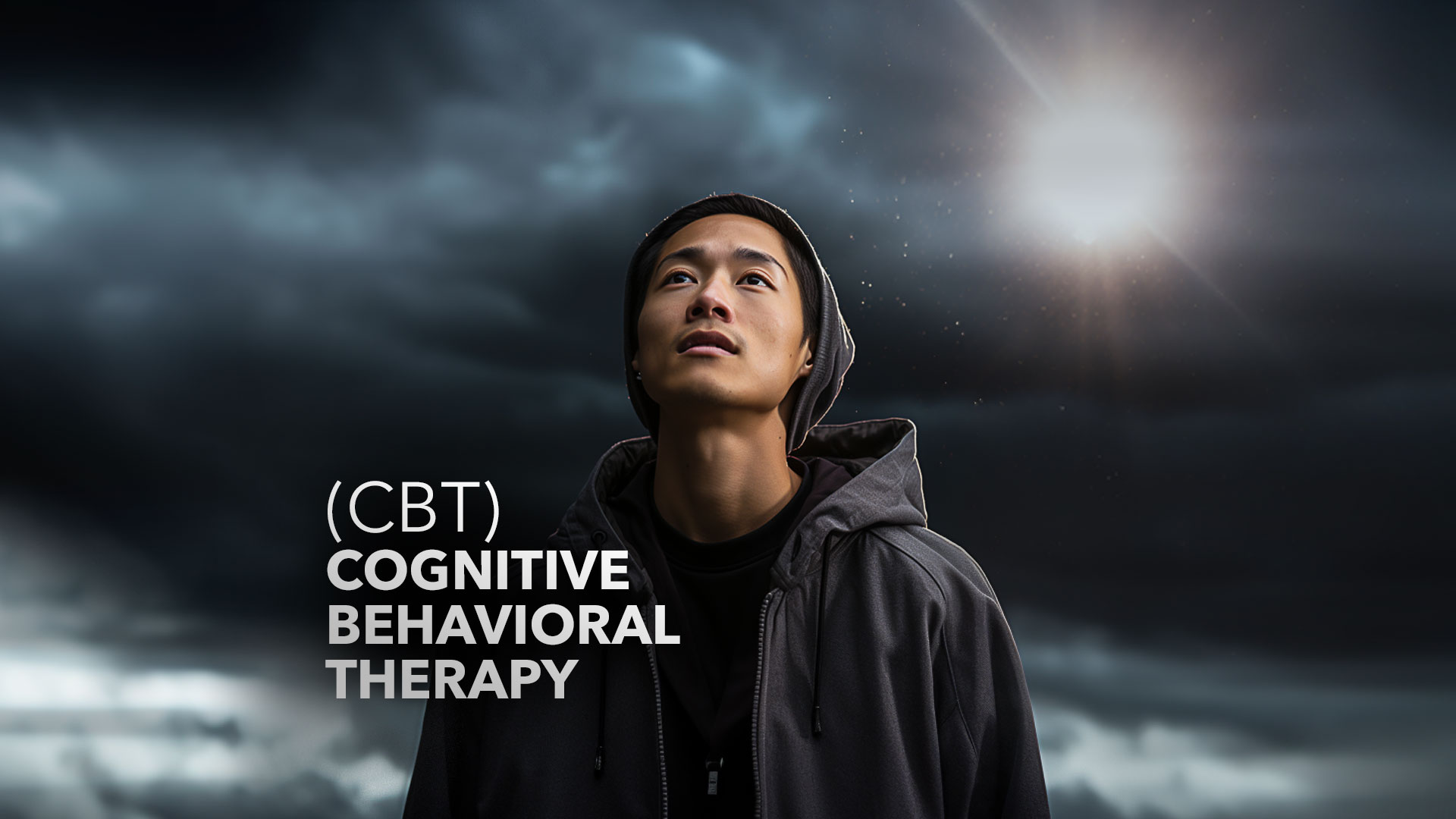In today’s fast-paced world, mental health disorders are becoming more prevalent. Thankfully, various therapeutic approaches have been developed to help individuals cope with and overcome these challenges. There are several approaches to such treatment, such as Cognitive Behavioral Therapy (CBT) — a widely recognized and effective form of psychotherapy.
Understanding Cognitive Behavioral Therapy :
The Cognitive Behavioral Therapy (CBT) method is a psychotherapeutic technique focusing on the connection between thoughts, emotions, and behaviors. It is based on the premise that our thoughts influence our feelings and actions. Individuals can change their emotional and behavioral responses by identifying and challenging negative or irrational thoughts. CBT is goal-oriented and time-limited, typically conducted over several sessions. It is collaborative, with the therapist and individual working to identify and address problematic thoughts and behaviors.
Core Principles of CBT
Cognitive Behavioral Therapy (CBT) operates on several core principles. Cognitive restructuring involves identifying and replacing negative or distorted thoughts with more rational and positive ones. Behavioral activation encourages individuals to participate in activities that promote positive emotions and well-being, breaking the cycle of avoidance and withdrawal. Exposure therapy gradually exposes individuals to feared or avoided situations, reducing anxiety and desensitizing them to triggers. Skill-building equips individuals with coping techniques to manage stress and other difficulties effectively.
Essential Techniques Used in CBT
Cognitive Behavioral Therapy (CBT) incorporates various techniques to help individuals address and modify their thoughts, emotions, and behaviors. Here are some of the critical techniques used in CBT:
Thought Monitoring: This technique involves journaling or self-reflection to identify and record negative or automatic thoughts. By becoming aware of these thoughts, individuals can challenge and change them. They can evaluate the evidence supporting these thoughts and consider alternative perspectives.
Cognitive Restructuring: Once negative thoughts are identified, individuals work with their therapist to challenge and reframe them. This process involves examining the evidence for and against these thoughts, replacing them with more realistic and positive alternatives. Individuals can develop a more balanced and adaptive mindset by challenging distorted thinking patterns.
Behavioral Experiments: Individuals actively test the validity of their negative thoughts by engaging in behavioral experiments. These experiments provide evidence against their beliefs and help individuals develop new perspectives and behaviors. For example, if someone believes they will fail at a particular task, they might engage in a behavioral experiment to prove otherwise, gaining confidence and challenging their opposing beliefs.
Graded Exposure: This technique is commonly used to treat anxiety disorders. It involves creating a hierarchy of feared situations and gradually exposing individuals to them in a controlled and supportive manner. Individuals can reduce their anxiety and build confidence by systematically facing their fears.
Relaxation and Mindfulness Techniques: CBT often incorporates relaxation exercises, deep breathing, and mindfulness practices to help individuals manage stress, increase self-awareness, and promote emotional regulation. These techniques can be used during therapy sessions and as part of an individual’s self-care routine.
Problem-Solving Skills: CBT teaches individuals practical problem-solving techniques to address life challenges. By learning effective problem-solving strategies, individuals can approach difficulties with a proactive and solution-oriented mindset, reducing stress and enhancing their overall well-being.
Homework Assignments: After therapy sessions, concepts learned should be reinforced. Individuals are often assigned tasks or exercises to practice outside therapy. These assignments may include implementing new coping strategies, challenging negative thoughts, or engaging in behavioral experiments. Homework assignments help individuals apply what they’ve learned in therapy to real-life situations, promoting progress and self-reflection.
Benefits and Limitations of CBT
Cognitive Behavioral Therapy (CBT) offers several benefits, including empowering individuals to take an active role in their treatment, providing practical skills that can be applied daily, focusing on the present and future, and promoting long-term resilience. A substantial body of research supports it and has demonstrated effectiveness in numerous clinical trials. However, CBT may not be suitable for everyone, and individual results may vary. Individuals must be active participants and committed to the process. Additionally, the availability of trained CBT practitioners and financial considerations may limit access to this form of therapy.
Application of CBT
CBT is widely used to treat various mental health disorders, including anxiety disorders, depression, post-traumatic stress disorder (PTSD), obsessive-compulsive disorder (OCD), and eating disorders. It has also been adapted for other areas, such as anger management, substance abuse, and chronic pain management. CBT can be delivered individually or in group settings and is often combined with other therapeutic approaches to maximize effectiveness.
At Dr. Dee Health Center in Huntington Beach, California, Cognitive Behavioral Therapy (CBT) is a trusted and effective approach to promoting mental wellness and improving overall quality of life. CBT, offered by highly skilled and compassionate therapists, combines cognitive and behavioral techniques to address various mental health challenges. By working collaboratively with clients, CBT aims to identify and modify negative thought patterns and behaviors that contribute to emotional distress and unhealthy coping mechanisms. The dedicated team at Dr. Dee Health Center understands the unique needs of each individual and tailors the therapy to suit their specific goals and circumstances. With a focus on empowerment and practical strategies, CBT at Dr. Dee Health Center helps clients develop healthier perspectives, build resilience, and achieve lasting positive change.
FAQ
1. What is the purpose and approach of the Cognitive Behavioral Therapy (CBT) method in psychotherapy?
Cognitive Behavioral Therapy (CBT) aims to help individuals modify their thoughts, emotions, and behaviors by identifying and challenging negative patterns. Its collaborative, goal-oriented, and time-limited approach focuses on the connection between thoughts, emotions, and behaviors.
2. How does CBT teach problem-solving skills to individuals?
CBT teaches problem-solving skills to individuals by providing them with practical strategies and techniques to approach life challenges. Cognitive Behavioral Therapy includes identifying problems, generating alternative solutions, evaluating their effectiveness, and implementing the most suitable solution, fostering a proactive and solution-oriented mindset.
3. Why is CBT so effective in treating mental health issues?
CBT treats mental health issues by addressing the underlying thoughts, emotions, and behaviors. It provides practical skills, promotes active participation, and has a solid evidence base supporting its effectiveness in numerous clinical trials.
4. Do exposure therapies work in CBT?
Yes, exposure therapies are a practical component of Cognitive Behavioral Therapy (CBT). They gradually expose individuals to feared or avoided situations, helping them reduce anxiety, confront their fears, and develop coping strategies to manage and overcome their triggers.
5. Describe CBT’s approach to dealing with negative thoughts and emotions in individuals and the techniques it uses.
CBT addresses negative thoughts and emotions in individuals by identifying and challenging them. Techniques such as cognitive restructuring involve examining evidence for and against negative thoughts and replacing them with positive alternatives. Other techniques include thought monitoring, behavioral experiments, and problem-solving skills.





